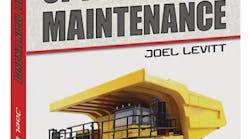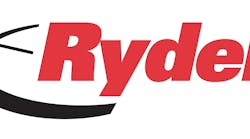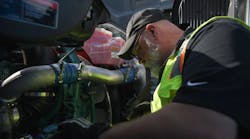With the growing demands and resource limitations on vehicle and equipment maintenance, some shops are considering contracting, or outsourcing, maintenance and repair services. The decision to do so depends on a wide variety of factors, including fleet size, mix of vehicles and type of equipment. It is also influenced by such considerations as cost effectiveness, timeliness and quality of service.
Ultimately, though, the outsourcing determination should be based on what is most effective, efficient and productive.
The better maintenance managers are able to deal with their workload with their own resources, the less the need for contract maintenance. But when there are considerable variations in the maintenance and servicing workload, temporary scheduled increases or poor utilization of resources, outsourcing maintenance may make sense.
It might also be a logical alternative for a limited scope of maintenance and repairs, repairs that require specialized tools, after-hours or emergency repairs or repairs with a high liability risk.
Contract maintenance is also helpful in operations where technicians do not regularly use certain special skills. Even if technicians are trained in specialty skills, they cannot maintain them because they do not use them frequently enough.
Yet another reason for contracting vehicle maintenance and repairs is the difficulty in finding and retaining competent technicians, plus the outgoing investment in keeping their knowledge current.
Certain Benefits
Contract maintenance programs allow companies to outsource the service and repair of their owned or finance leased truck to companies that specialize in vehicle maintenance, says Olen Hunter, director of sales for Paccar Leasing (PacLease). A commercial truck leasing company with independent and company-owned locations throughout the United States, Canada, Mexico and Germany, PacLease provides customized full-service lease, rental and contract maintenance programs.
PacLease is a part of the financial services group of Paccar, a global technology leader in the design, manufacture and customer support of high-quality light, medium and heavy duty trucks under the Kenworth, Peterbilt and DAF nameplates.
Dedicated services for repairs, preventative maintenance and predictive services can be done at outside facilities, or at a company’s own location with dedicated technicians and all necessary parts and services. Either service includes everything for one price, notes Bradley A. Thomas, president of First Transit and First Services. This provides savings through operational efficiencies, reduced liability and parts costs.
First Transit and First Services are subsidiaries of FirstGroup America, North America’s largest provider of surface transportation services. First Transit is the largest public sector provider of transit services in North America. First Services provides fleet maintenance, facilities management and computer laptop mounting solutions to public and private sector companies.
“Contract maintenance is a good idea for any company interested in controlling costs and freeing up resources for its core business,” Hunter says. “In-house maintenance facilities - including technicians, training, specialized tools and parts inventory - utilize resources that could produce better returns in other areas of the business.”
Companies that outsource their maintenance to PacLease, for example, receive the support of more than 400 national dealer service locations, 24-hour roadside service and factory-trained technicians that understand the latest technology, he says. “Maintenance outsourcing also eliminates real and hidden costs associated with owning one’s own shops.”
Business Functions
There are a number of scenarios where maintenance outsourcing makes the most sense for both small and large businesses, points out Bill O’Leary, Penske Truck Leasing’s vice president, field maintenance - southeast region. “There is a wide array of technology within current OEM vehicles,” he says. “Keeping up-to-date on these technologies can be very challenging and costly for businesses. Continuous training for our technicians and our management team to keep pace with ever-changing technology and new regulations is a core competency for Penske.”
Penske Truck Leasing is a joint venture among Penske Corporation, Penske Automotive Group and General Electric. A leading global transportation services provider, Penske operates more than 200,000 vehicles and serves customers from more than 1,000 locations in North America, South America, Europe and Asia. Product lines include full-service truck leasing, contract maintenance, commercial and consumer truck rentals, transportation and warehousing management and supply chain management solutions.
With equipment technology changing rapidly, “many fleets are asking themselves if the investment in new tooling and costs associated with training to keep up with the new technology is the best use of their financial resources,” adds Hunter.
Maintenance management and leasing companies offer various types of contract maintenance programs and services - from regular total vehicle preventive maintenance service at regular intervals, to authorized engine service, to comprehensive repair work. Usually, these are done with a consistent billing structure, allowing companies to budget one monthly payment amount and not worry about fluctuations in maintenance costs.
“Services and options are customized based on the needs of the customer, Thomas of First Transit and First Services says. “Fleet maintenance will never be one-size-fits-all since there are so many variables such as fleet usage, operating environment and equipment age.”
“There are different service levels available in the industry to match the needs of different customers,” adds PacLease’s Hunter. “Contract maintenance programs can be as creative as you can imagine.” They all typically include preventive maintenance service, and may also include repair work, emergency service, engine service and even trailer or body service.
Similarly, Penske Truck Leasing offers a wide array of contract maintenance programs, which can include such things as guaranteed running cost, target pricing, labor guarantees and peg programs that “will lower costs and increase vehicle uptime for any size fleet,” O’Leary says.
“In many cases, Penske has performed maintenance services for the truck’s entire lifecycle. When that occurs, we are in possession of a comprehensive vehicle history that is also made available to customers. This history can help when spec’ing out new equipment to ensure that the fleet is optimized for the best mpg and lowest possible lifecycle cost equipment.”
Leasing Companies
One of the benefits of working with leasing companies is that they can include other services as part of their contract vehicle maintenance service options. These services can include vehicle leasing, rental vehicles, emergency roadside assistance, safety programs, financing, regulatory compliance support, fuel tax reporting, insurance and more.
Often, many of these items are included as part of a typical full-service leasing agreement, observes Hunter. Full-service leasing provides custom spec’d trucks with services included.
“When a customer already owns vehicles that have not yet reached their economic useful life, a contract maintenance program is a great option,” he says. “Many companies work with full-service leasing providers because they have access to a range of programs and services to enhance their transportation operation.”
At Penske Truck Leasing, service include collision repair, logistics services and the sale of used trucks that have been exclusively serviced by the company, says O’Leary.
STARTING POINT
The logical starting point for determining if an operation would be better served by contracting maintenance and repair is to evaluate the operation and determine which functions should be outsourced. A rule of thumb is to keep what the operation does best and job out the other work.
There’s also the matter of deciding upon the objectives for outsourcing the work. Is it for operational savings, to reduce capital investment, not have to worry about changing technology, to improve technician productivity, etc.?
Because every location is unique, it is wise to start the process by having a fleet and business analysis conducted by a professional fleet management company, says Thomas. “This will allow for the design of a comprehensive proposal that will help an operational reach its fleet goals.”
AGREED FRAMEWORK
Once a maintenance provider has been selected, it is then necessary to develop a comprehensible and detailed contract arrangement that defines, at the very least, the expected minimum operational parameters.
Thomas advises carefully reviewing the contract with the maintenance provider for hidden costs and charges, and making certain that the contract includes all required, and any desired, elements.
“It is important to have a clear understanding of services included or not included under the agreement,” says Hunter. “This prevents misunderstanding from occurring when a customer expects an event to be covered when it is not.”
“Cost control is perhaps the most important reason to be in possession of a clearly defined contract with a contract maintenance provider,” O’Leary adds. He notes that Penske operates an online fleet management tool that allows customers to view all repair, maintenance and emergency services work being done on their vehicles, and review the accompanying itemized costs, in an effort to avoid confusion as to what services are performed.
O’Leary recommends measuring the results of maintenance processes using such metrics as PM currency, PM quality, CPM and downtime in order to make any adjustments for continual improvement.
Not to be overlooked is the essential need to have an established mechanism for communications and a conduit for the flow of information between the company and the contract maintenance provider. Successful maintenance outsourcing requires a collaborative relationship.
The communication process starts at the driver-technician level, with drivers completing Driver Vehicle Inspection Reports and then giving them to the maintenance provider for follow up and repair, says Hunter.
“There are electronic DVIR programs that allow drivers to communicate with the fleet manager and the maintenance manager simultaneously, which can improve speed of repair on critical issues,” he points out.
Consistent communication between the fleet and the maintenance provider regarding equipment maintenance scheduling, repeat repair items, trends and equipment status is a must, continues Hunter. Typically, this is handled via e-mail notification or on the telephone between the two parties. If the maintenance provider is on-site (they have taken over a customers shop) then often the maintenance manager will communicate with the fleet’s operations department in-person.
“Regardless of the frequency and methods of communication,” he says, “a thorough fleet cost review should be conducted quarterly and annually to determine units that are exceeding maintenance budget and which ones are not. Troubled units should be investigated, and determine if the unit is a candidate for replacement.”
The crucial thing to keep in mind when contracting maintenance and repair services is that just because these tasks are outsourced, the company still has overall management and oversight responsibility. Failure to keep tabs on things is a main cause of a failed outsourcing initiative.





